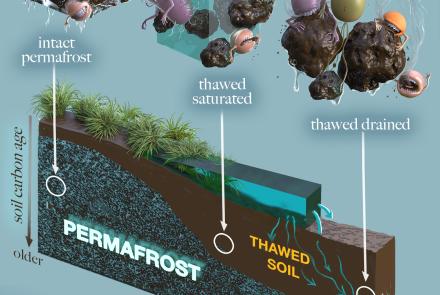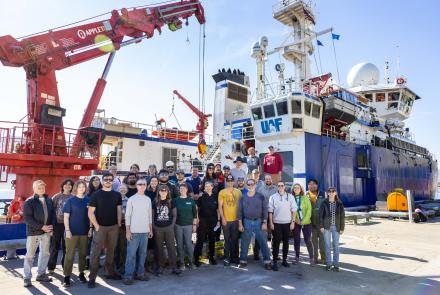Something Stirring Under the Aleutian Arc
Something stirred beneath the Aleutian Islands in the fall of 1996. Beginning in September, Pavlof Volcano erupted. At the same time, hundreds of small earthquakes shook the foundations of other volcanoes that make up the Aleutian chain. Scientists have not seen such widespread turmoil in the area since.
Steve McNutt is a volcanologist with the Alaska Volcano Observatory who thinks the simultaneous earthquake and volcano activity in1996 was no coincidence. Something larger may have triggered the rumblings, McNutt said, and that something is a key to figuring out the mysteries of the Aleutian Arc, the swath of volcanoes that curves from the Alaska Range to Russia's Kamchatka Peninsula. One of Earth's geological wonders, the Aleutian Arc has a spread equal to the distance between San Francisco and Washington, D.C.
McNutt recently presented his evidence to a room full of colleagues at the American Geophysical Union meeting in San Francisco. Pavlof Volcano, famous for its dependable fall activity, erupted from September until December 1996. At the same time, a swarm of small earthquakes rumbled beneath Martin and Mageik volcanoes in Katmai National Park, beneath Iliamna Volcano west of Anchorage, and beneath Strandline Lake, about 15 miles northeast of volcanic Mount Spurr. All the action occurred along a 540-mile swath of the Aleutian Arc.
McNutt and co-workers, including John Power of the Alaska Volcano Observatory in Anchorage, calculated the slim odds of all that simultaneous volcanic and seismic activity occurring by chance.
"The chance of four different earthquake swarms in different places is less than one percent," McNutt said. "There's a 99 percent likelihood there was a trigger."
What could cause clusters of small earthquakes and a volcanic eruption over a spread of 540 miles? The Landers earthquake in California, a magnitude 7.3, shook nearby volcanoes to life, but there was no large earthquake in Alaska during autumn of 1996.
"Here, something we didn't see triggered a response," McNutt said.
A pulse of energy may have traveled the entire length of the Aleutian Arc, triggering small earthquakes as it traveled. Another possibility is the Aleutian Arc's delayed reaction to a magnitude 8 earthquake that rocked Adak in June 1996. Such large earthquakes occur about once every decade in Alaska, McNutt said, and the Adak earthquake may have relieved so much stress that it somehow affected the entire interface of the Pacific and North American plates beneath the Aleutians. That meeting of plates in Earth's crust created the Aleutian Islands and makes Alaska the earthquake and volcano capital of the United States.
In the Aleutians, the Pacific plate grinds beneath the North American plate an average of about 8 centimeters per year, about the speed fingernails grow. During the events of fall 1996, the plate interaction somehow changed, McNutt said.
"It either sped up or slowed down, or something changed direction," he said.
Global Positioning System receivers would take some of the mystery out of what happened in fall 1996. By cementing them in the ground and checking the receivers over time, scientists can determine how fast Earth's plates are moving and in which direction. Scientists don't have a large network of GPS units in the Aleutians now, but future deployments will help scientists figure out what's going on beneath the Aleutian Arc.



